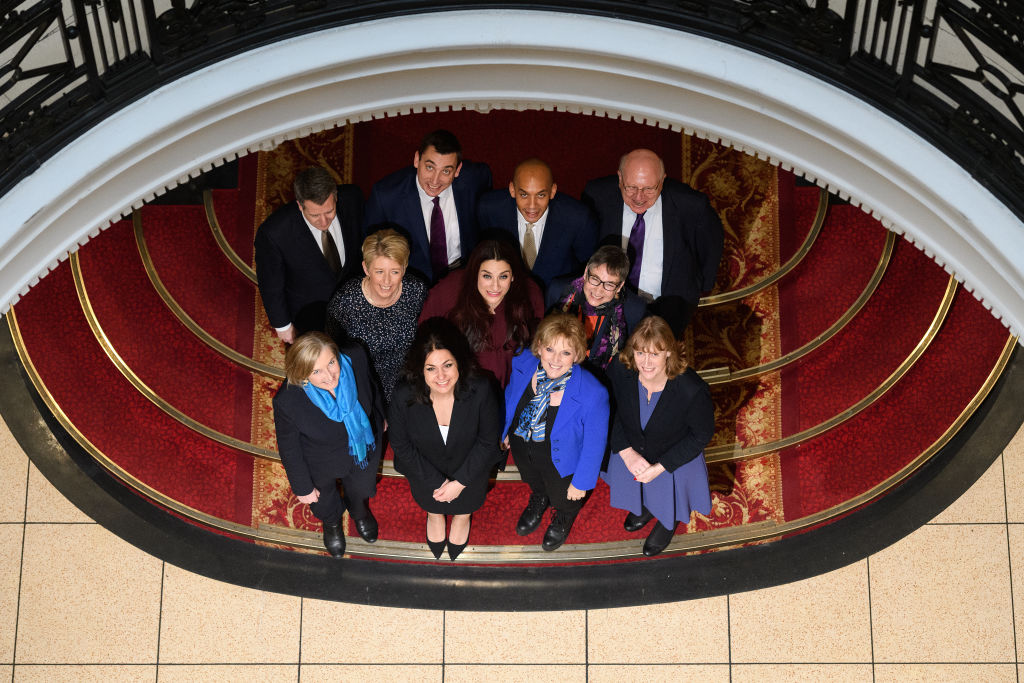And then there were eleven. The Independent Group has been enlarged today by the defection of moderate Tories Anna Soubry, Sarah Wollaston and Heidi Allen, who gave as their reason the Brexification of the Conservative Party. ConservativeHome’s executive editor Mark Wallace and others might dispute many of the charges, but the splitters describe a mood in the Tory Party that many will recognise, and that mood was set by the unchecked belligerence of Brexit ultras.
TIG is no longer solely about Labour anti-Semitism but a lurch from the post-1997 centre ground by both main parties. The latest YouGov poll puts TIG in third place on 14 per cent. Are the Tiggers bringing about a fundamental realignment of British politics or are voters just saying ‘ta-ta for now’ until Labour and the Tories get their act together? It’s hard to say but there is certainly an opportunity for even a small party or parliamentary bloc to reshape politics in limited but important ways.
The model is not the SDP but Australia’s DLP — the Democratic Labor party. In 1955, Robert Menzies is six years into his second premiership and his centre-right liberal-country coalition is the natural home of Australia’s expanding middle class. Across the floor in the Australian Labor party (ALP), fortune has been less favourable. Its leader Doc Evatt was a principled man (aside, that is, from his then-commonplace support for the White Australia policy) but circumstances — and his temper — were against him. Communist infiltration of trade unions, which had begun over a decade earlier, dogged his leadership as did the claims of Soviet defector Vladimir Petrov that communists had penetrated Evatt’s office. Evatt blamed his unexpected loss of the 1954 election on the row and turned on the mostly Catholic anti-communist faction within the ALP. The following year, the anti-communists split to form what later became the Democratic Labor party and espoused a platform of social democracy and tough defence and foreign policies.
The divorce was not an amicable one. Seven Labor MPs who defected to the DLP lost their seats months later in the 1955 election but the DLP found a different path to power. Their strategy relied on the preferential voting system used in house of representatives elections, awarding their preferences to the liberals and the country party to keep the ALP out. In exchange, the DLP got coalition governments to deliver its key pledges, including funding for Catholic schools and more spending on defence. Labor remained in opposition until 1972 when the voters decided it was time for Gough Whitlam. Bitterly for the DLP, which by this point had become a redoubt of social conservatism, the Whitlam government was socially liberalising and recognised communist China. Bitterly for Whitlam, a wry idealist, the combination of the DLP and his short time in office convinced Labor that it had to shift rightwards. Both men would spit at the suggestion but without the DLP, the premierships of Bob Hawke and Paul Keating might never have happened.
Could the Tiggers draw on the lessons of the DLP? The biggest hurdle is our first-past-the-post electoral system but as long as neither Labour nor the Tories look capable of winning a comfortable majority, a small party or parliamentary bloc can hold the balance of power. The DLP never won a seat in the house of reps and at its zenith managed five senators. But it had a mission:
‘To erect a road block of DLP votes across the ALP’s path and so deny it the fruits of office… To wage a war of attrition against the ALP and so compel it to break its communist connections and again become the acceptable alternative Australian government it once was, or to force it to make way for a party fulfilling this requirement.’
By focussing on that mission, the tiny DLP enjoyed outsized influence in Australian politics for a generation. TIG can’t offer preferences but it can choose which marginal seats to stand in and which to steer clear of. It can organise tactical voting for and against parties or candidates. It can get into local politics and be town hall kingmakers. It can recruit in the Lords, where members are already more independent-minded and less tribal than in the lower chamber. It can make life easy or hard for governments and, in some circumstances, make or break them. Of course, to replicate the DLP’s strategy, they need a government they can work with. Labour and the Tories both have a fundamentalism problem but they are of a different order and while Jeremy Corbyn is the source of Labour’s woes, Theresa May is merely a hostage to her zealots. The most obvious course, then, would be to work with May while she’s still there to keep Labour out of power and hobble the right-wing forces in the Tory Party. We can’t know what their demands might be until they articulate some policies but big-ticket items might include electoral reform, alleviation of the worst of austerity or negotiating a post-Brexit Norway Plus.
James Forsyth writes that ‘the next Tory leader needs to be someone capable of acting as a bridge between the two wings of the party’. The implicit assumption that May is governing on borrowed time is probably correct, as is James’ point about the urgency of her successor, come whenever he or she may, uniting One Nationers and sensible right-wingers. If TIG grows to be more than a media excitement, a Tory leader who can work with them will be just as vital.







Comments